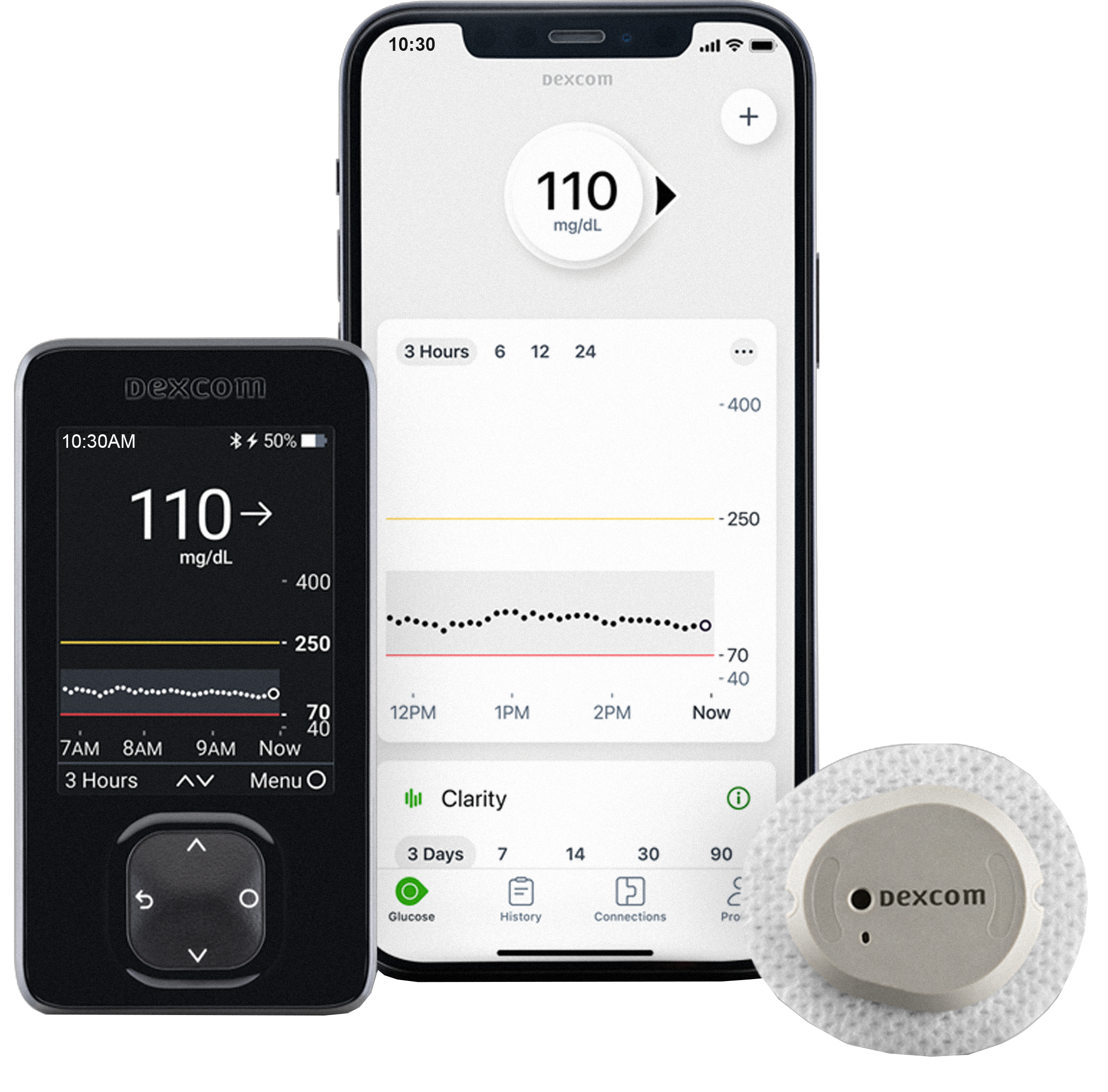Journey Mapping the Experiences of CGM Users
Through in-depth user research, we uncovered key insights that humanized the experience of people with diabetes, fostering empathy in the design process.
Role
User Research Intern
Timeline
January - March 2023
Methods
In-depth interviews
Thematic analysis
Affinity mapping
Tools
Figma
FigJam
Miro
BACKGROUND AND CHALLENGE
Dexcom is a company that develops continuous glucose monitoring (CGM) systems. This technology allows people with diabetes to track and manage their glucose levels in real-time by using a small sensor inserted under the skin that transmits glucose readings to a receiver or smartphone app.
CGMs are highly effective for managing diabetes, but many individuals with Type 2 diabetes struggle with adoption. Key barriers include:
Limited Awareness and Education – Many patients are unaware of CGMs or lack the guidance to use them effectively.
Cost and Insurance Barriers – CGMs can be expensive and often require extensive insurance coverage.
Behavioral Adjustment – Using a CGM requires lifestyle changes that users may struggle to integrate into daily routines.
Research Goal: To explore the lived experiences of individuals with Type 2 diabetes using CGMs, uncover key pain points, and identify opportunities for improved user experience and accessibility.
MY ROLE
As a user researcher, I led various aspects of the research process, including:
Recruiting and interviewing participants with Type 2 diabetes.
Conducting expert interviews with healthcare providers.
Analyzing qualitative data using thematic analysis.
Creating user personas and journey maps to synthesize findings.
RESEARCH PROCESS
Secondary Research and Study Design
To set the foundation, we conducted:
Literature Review – Understanding diabetes management, existing CGM solutions, and other factors contributing to the onset and progression of the disease.
Affinity Mapping – Identifying key themes to guide our research questions.
Research Plan Development – Defining participant criteria and key areas of exploration.
2. In-Depth Interviews
Our research plan consisted of in-depth interviews with both health experts and people with T2 diabetes. We created a semi-structured interview guide focused on exploring the medical and personal journey of this user group.
USER INTERVIEWS
We conducted over 10 interviews with people with type 2 diabetes, exploring their experiences with glycemic control, CGM access, diabetes assumptions, and treatment decisions.
EXPERT INTERVIEWS
We interviewed healthcare providers such as endocrinologists, diabetes nurses, and doctors of pharmacy to improve our understanding of diabetes management, treatment options, and their approach to insulin initiation and titration.
RESEARCH FINDINGS
Through thematic analysis, we identified three key patterns shaping CGM user experiences and developed personas and journey maps that highlighted specific needs, barriers, and opportunities for intervention:
KEY INSIGHTS
Real-time Data Empowers Users
Users felt more in control of their diabetes when they could visualize glucose fluctuations. However, many were introduced to CGMs only after years of ineffective management.
Financial and Insurance Barriers Prevent Adoption
Even users who found CGMs valuable struggled with affordability and inconsistent insurance coverage, making long-term use difficult.
Healthcare Providers Influence Adoption
Patients often depended on doctors to introduce CGMs but found provider knowledge inconsistent. Many providers hesitated to recommend CGMs due to insurance limitations.
DESIGN RECOMMENDATIONS
Our research highlights key opportunities to improve CGM adoption among individuals with type 2 diabetes. Many potential users are unaware of CGM benefits because they are not tipically considered candidates, and inconsistent provider knowledge and insurance limitations further limit access. To address these challenges, we propose the following design recommendations:
Advocate for Financial Assistance – Develop a digital tool to help users navigate insurance requirements, access cost-saving programs, and explore financial assistance options, making CGMs more affordable and accessible.
Expand CGM Awareness Through Targeted Education – Implement educational initiatives to introduce CGMs earlier in the diabetes journey, ensuring individuals with Type 2 diabetes understand their benefits and availability.
Enhance Clinician Support – Provide healthcare providers with streamlined educational materials, training modules, and decision-support tools to increase confidence in recommending CGMs and improve patient adoption.
LESSONS LEARNED
Empathy as a Core Value
This project highlighted the importance of empathy in understanding users' experiences, especially when developing health-related technologies. It reinforced the powerful role researchers and designers play in advocating for users and creating solutions that truly address their needs
Systems Point of View
Working in the health space requires a holistic understanding of the interplay of environmental and genetic factors that influence the health journey of individuals. Having a systems thinking perspective and integrating all stakeholders into the conversation is key to build products that improve users’ lives.
Wearing a CGM
During this internship, I had the opportunity to wear a CGM for two weeks. Seeing my blood sugar fluctuate in real time gave me a firsthand understanding of the constant vigilance and planning that those with diabetes must undertake to manage their health. While this experience cannot fully replicate living with diabetes, it was a powerful tool for building empathy and gaining a more personal understanding of diabetes management.





